
Currently, it is popular to suggest that if we perform the same number of sets to failure across the week, then the amount of hypertrophy we experience will be the same regardless of our training frequency. But how does this fit with the rest of the exercise science literature?
.
#1. Do higher frequencies cause more hypertrophy?
Recent meta-analyses have shown that hypertrophy in strength-trained lifters is not statistically affected by training frequency when the same number of sets are performed to failure each week. Even so, there is a slight numerical superiority of training a muscle with a higher frequency (at least up to 3 times per week).
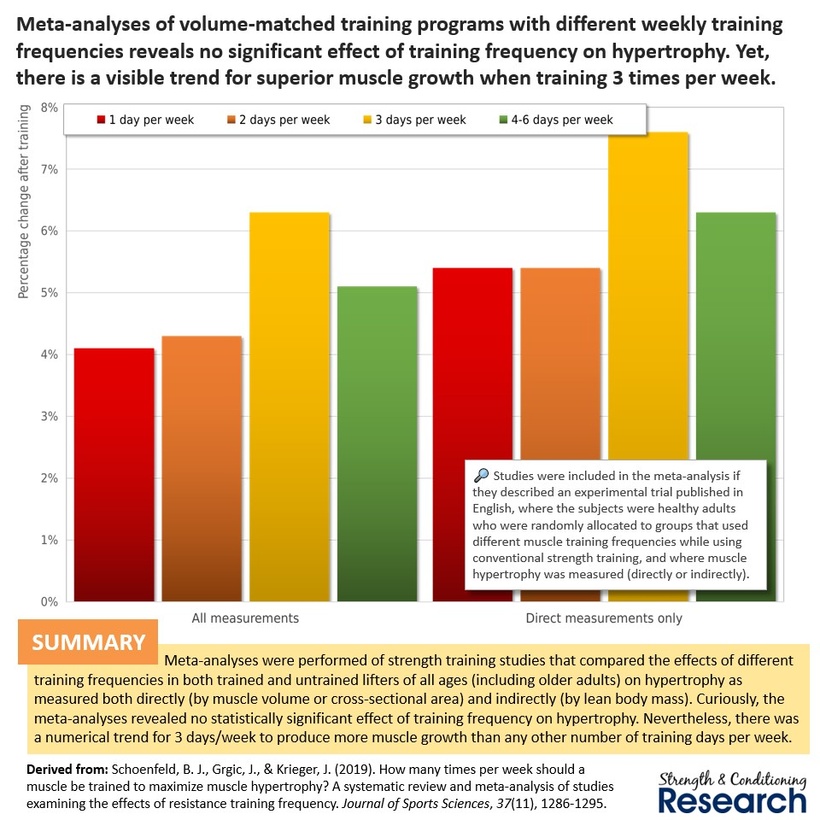
.
For training frequency to have no effect on hypertrophy when training volume is equated (as this meta-analysis suggests), this implies two key facts about the underlying physiology.
- Firstly, each set must stimulate the same amount of hypertrophy regardless of its location within a workout. For example, if we do 1 set per workout, 3 times per week, each of those sets must stimulate the same hypertrophy as each of the sets when we perform all 3 sets in 1 workout each week.
- Secondly, muscles must remain in an anabolic state for longer when training volume is higher (and this state must last for up to a week), so that there are minimal atrophy effects between workouts that are spaced further apart.
.
#2. Does each set cause the same hypertrophy regardless of where it occurs?
Meta-analyses have shown that the relationship between the number of sets per workout and hypertrophy is not one-to-one. Two sets per workout does not cause twice as much muscle growth as one set. In fact, six sets per workout are needed to cause twice as much hypertrophy as one set. Therefore, each set produces a very different stimulus for hypertrophy according to where in a workout it occurs.
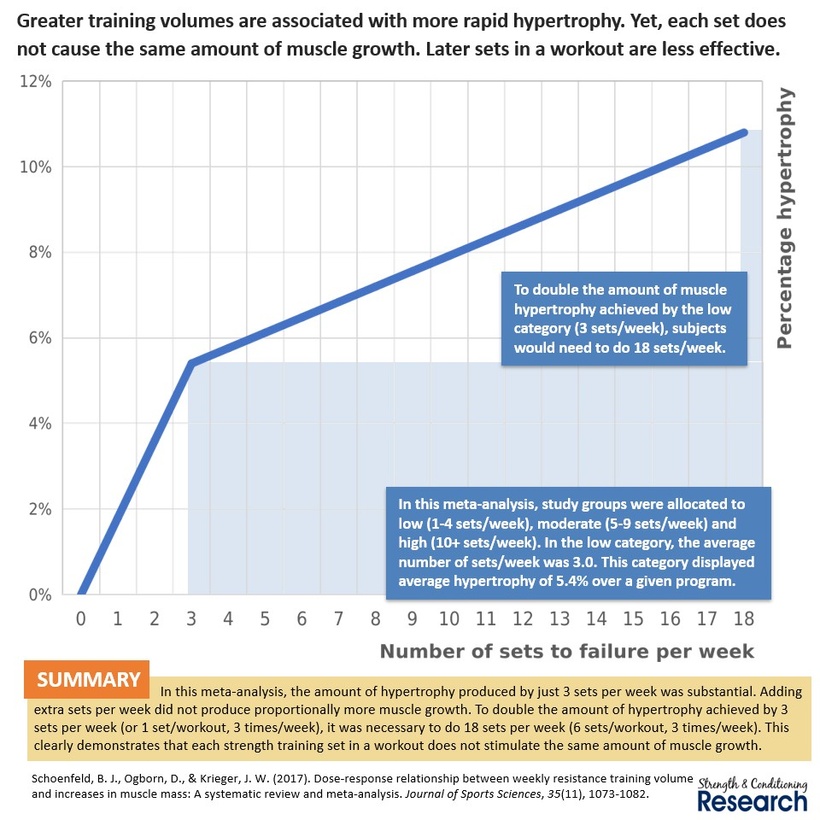
.
Importantly, the above meta-analysis does not take into account the fact that some of the volume studies used short rest periods and therefore displayed a dose-response curve that continues increasing for a greater number of sets than is probably the case with longer rest periods. When corrected for the rest period duration, there is probably a plateau at lower volumes that ultimately means that doing more than six sets per workout is unlikely to produce any additional effect. Thus, we can predict that doing one set per workout, three times per week will cause the same hypertrophy as any number of sets performed in a single workout.
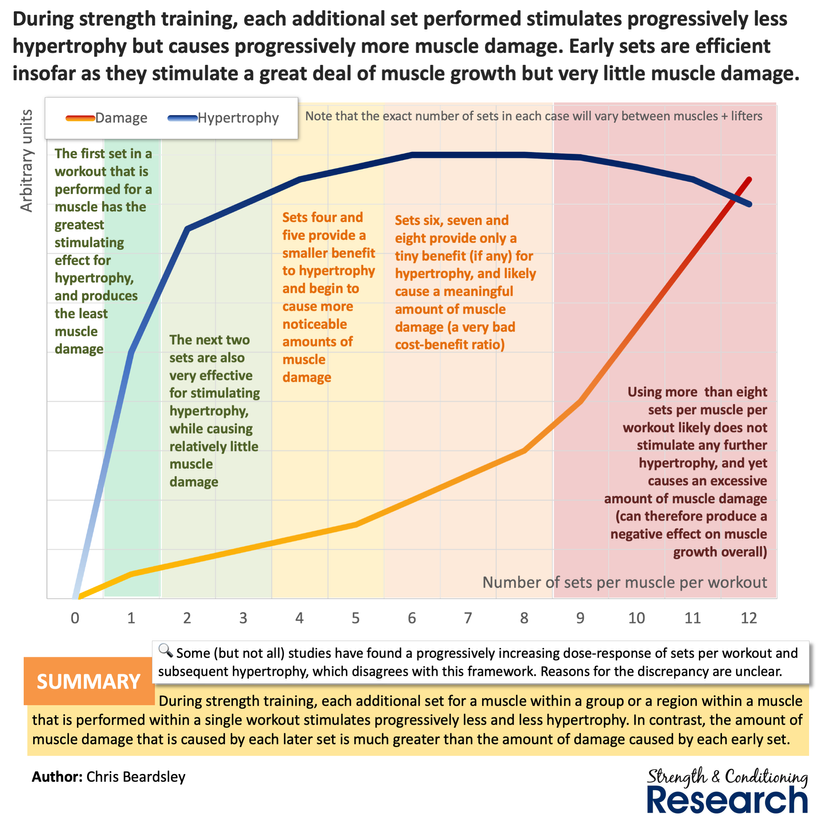
.
#3. How long do post-workout increases in myofibrillar protein synthesis last, and do higher training volumes cause longer elevation durations?
Currently, it is widely assumed that the post-workout increases in myofibrillar protein synthesis rate elevations last approximately 48 hours. Indeed, whenever researchers set out to connect post-workout myofibrillar protein synthesis rate increases to long-term hypertrophy, they tend to study this 48-hour window. Since muscle fibers must either be in an anabolic state or in a catabolic state (such that they are always growing or shrinking), this suggests that doing strength training workouts every other day (or approximately 3 times per week) will be the optimal training frequency to avoid atrophy occurring between workouts. Even so, there are some indications that myofibrillar protein synthesis rates might last slightly longer in untrained individuals (and after aerobic exercise workouts, of all things).
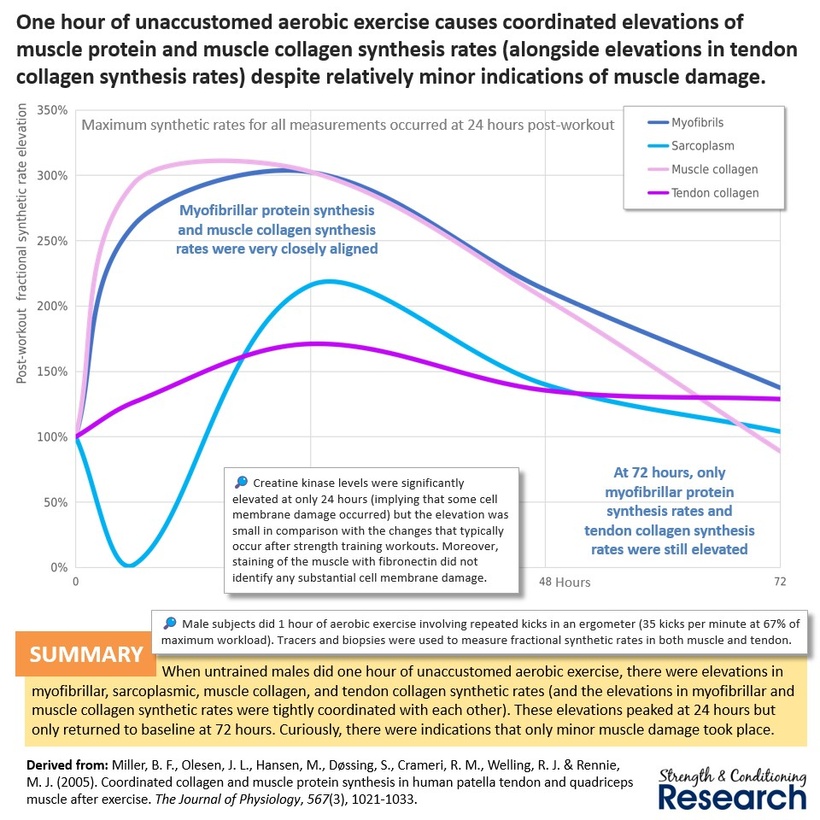
.
Nevertheless, performing a strength training workout certainly cannot produce an anabolic effect that lasts for seven days, as demonstrated by the fact that atrophy still occurs after seven days even when an eccentric training workout is performed immediately before a seven-day period of immobilisation. Importantly, while the workout protected the muscle for two days of immobilisation, it could not protect the muscle throughout the entire seven days, suggesting that three days is likely the maximum duration of protection that can be afforded by a single workout.
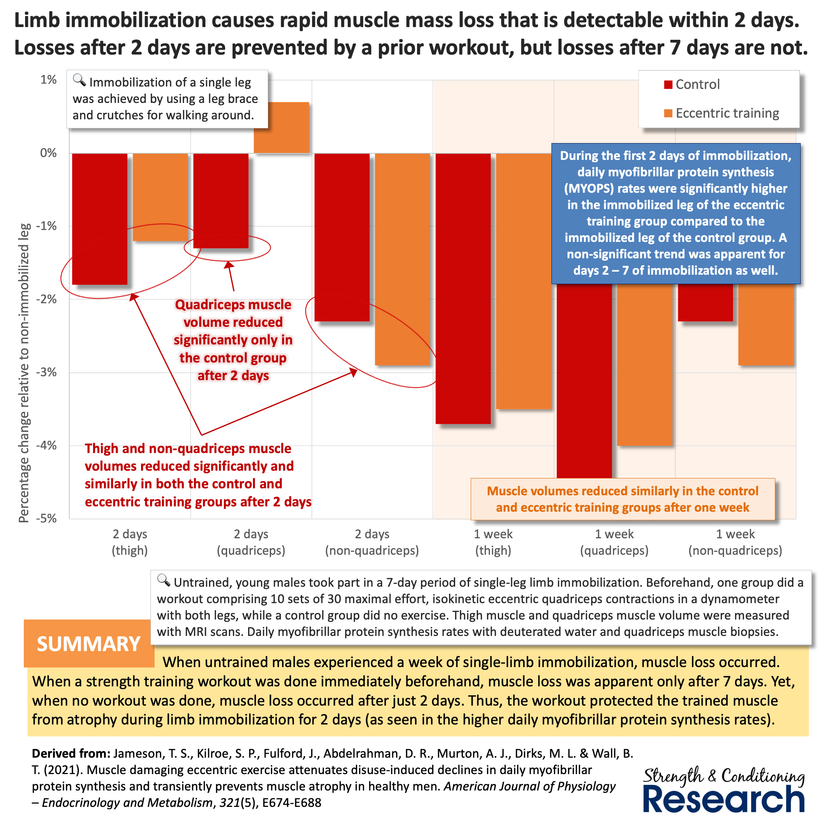
.
#4. What do the most recent longitudinal training studies report?
Interestingly, since the above meta-analysis was first published, some studies in strength-trained lifters have reported indications that a higher training frequency may be beneficial for hypertrophy as well as for producing faster strength gains.
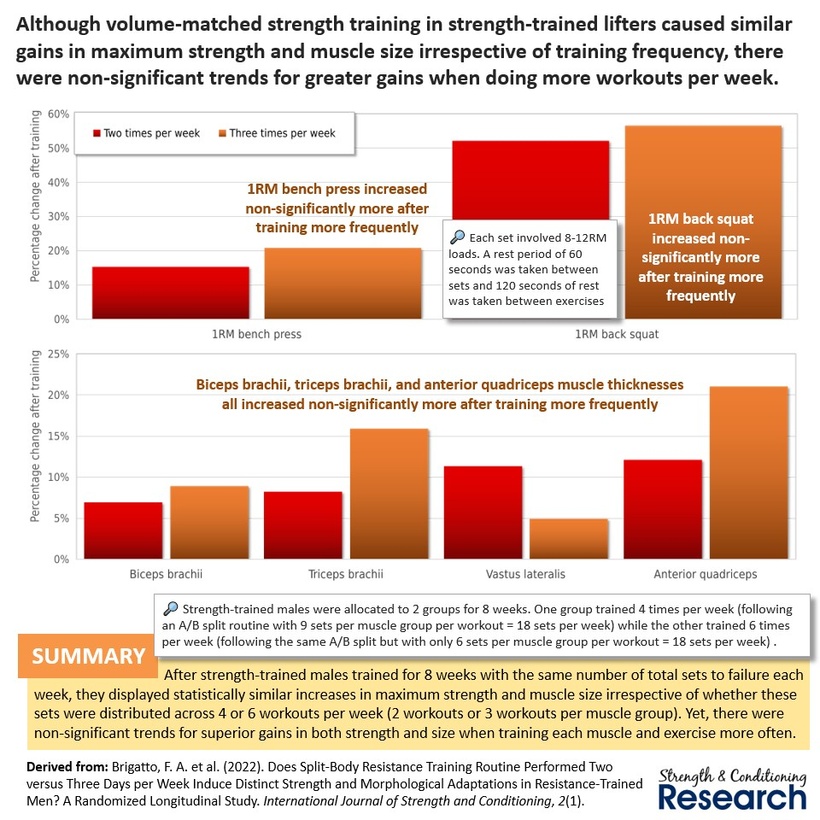
.
Conclusions
Recent meta-analyses have shown that muscle hypertrophy is not significantly affected by training frequency when the same number of sets are performed to failure each week. Yet, this observation makes two predictions that do not fit with the rest of the literature. Firstly, it implies that each set must stimulate the same amount of hypertrophy regardless of its location within a workout. For example, if we do 1 set/workout, 3 times/week, each of those sets must stimulate the same hypertrophy as when we perform 3 sets/workout once per week. Yet, dose-response analyses of training volume have shown that each set generates a completely different stimulus for hypertrophy according to where in a workout it occurs. Indeed, the second and third sets of a workout stimulate only a fraction of the hypertrophy that the very first set stimulates. Secondly, it implies that muscles must remain in an anabolic state for much longer when training volume is higher, such that there are minimal atrophy effects between workouts that are necessarily spaced further apart. Indeed, it indicates that training once per week should cause an elevation in myofibrillar protein synthesis rates that lasts essentially the entire week. Nevertheless, it currently seems likely that muscles return to a catabolic state within 72 hours (if not sooner), which then leaves many days in which atrophy can take place. Taken together, these two observations indicate that despite the current state of the evidence from meta-analyses of longitudinal strength training studies, muscle training frequency probably does matter for stimulating hypertrophy.

